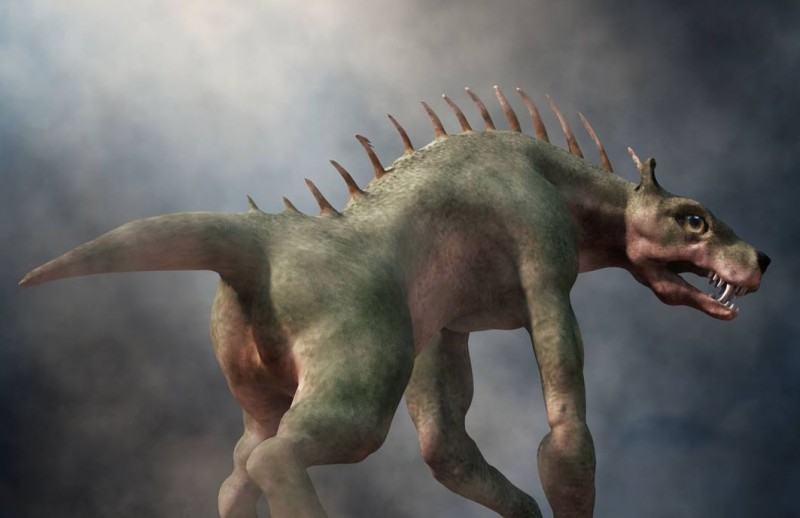
Introduction
The Chupacabra, a mythical creature with a reputation for terrorizing livestock and draining the blood of its victims, has long captivated the imagination of people around the world. In this article, we delve into the folklore surrounding the Chupacabra, explore alleged encounters with the creature, and separate fact from fiction. Join us as we unravel the mysteries surrounding this enigmatic entity.
What is the Chupacabra?
The Chupacabra, also known as the "goat-sucker," is a legendary creature primarily associated with Latin American folklore. Reports describe it as a small, bipedal or quadrupedal creature, often resembling a reptile or a canid. It is said to have large eyes, sharp fangs, and a distinctive appetite for livestock blood.
Origin of the Chupacabra Myth
The first reported sightings of the Chupacabra emerged in the late 20th century, originating from Puerto Rico. The creature quickly gained notoriety, spreading throughout Latin America and eventually reaching the United States and other parts of the world. Local tales and superstitions contributed to the development of its legend, fueling fascination and fear among the population.
Physical Description
Accounts of the Chupacabra's appearance vary, but common characteristics include scaly or leathery skin, spines running down its back, and elongated limbs. Some eyewitnesses claim it possesses wings, enabling it to fly or glide, while others describe it as a hairless, canine-like creature with a hunched posture. These physical traits, combined with its alleged thirst for blood, add to the creature's eerie reputation.
The Chupacabra Phenomenon
4.1 Mutilated Livestock and Animal Attacks
One of the main reasons the Chupacabra gained attention was the unusual killing and mutilation of livestock. Farmers reported finding their animals with puncture wounds on their necks and drained of blood. The eerie nature of these attacks sparked widespread concern and curiosity, leading to the emergence of various theories and speculations.
4.2 Eyewitness Accounts
Numerous individuals claim to have encountered the Chupacabra firsthand. These accounts often describe terrifying encounters with a creature that resembles the popular depictions. Witnesses report hearing eerie noises, experiencing a sense of dread, and witnessing the creature vanish into the darkness. However, skeptics argue that many of these sightings can be attributed to misidentification or exaggeration.
4.3 Media Coverage and Pop Culture Influence
The media's portrayal of the Chupacabra has contributed significantly to its notoriety. Reports and sensationalized stories have amplified the legend, capturing the public's imagination and generating widespread interest. The creature has also found its way into books, movies, and other forms of popular culture, solidifying its place in modern folklore.
Investigations and Explanations
5.1 Predatory Animals and Canid Misidentification
Many researchers and wildlife experts suggest that the Chupacabra phenomenon can be explained by the behavior of known predatory animals. Canids such as coyotes, wolves, and foxes are often implicated in the attacks on livestock. Misidentification of these animals, especially when suffering from mange or other diseases, could account for the creature's perceived abnormal appearance.
5.2 Hoaxes and Mass Hysteria
Hoaxes and pranks have played a significant role in perpetuating the Chupacabra myth. In some cases, individuals fabricate evidence or stage encounters to generate attention or exploit the public's fascination with the supernatural. Additionally, mass hysteria and a collective belief in the creature's existence have contributed to the proliferation of sightings and stories.
5.3 Biological Explanations
Scientists have explored biological explanations for the Chupacabra phenomenon. Some theories suggest that genetic mutations or viral infections in local animal populations could account for the creature's anomalous appearance and behavior. However, conclusive evidence supporting these explanations is currently lacking.
Scientific Perspectives
6.1 Lack of Concrete Evidence
Despite decades of reported sightings and investigations, the Chupacabra remains elusive. Skeptics argue that the absence of concrete evidence, such as carcasses or DNA samples, casts doubt on the creature's existence. Without verifiable proof, the Chupacabra remains firmly rooted in the realm of folklore and urban legend.
6.2 Cryptozoology and the Chupacabra
The study of unknown or hidden animals, known as cryptozoology, has embraced the Chupacabra as one of its most intriguing subjects. Cryptozoologists strive to uncover evidence of mythical creatures like the Chupacabra, often relying on eyewitness accounts and folklore to guide their research. However, the scientific community generally regards cryptozoology as a pseudoscience, lacking rigorous empirical methodology.
Global Chupacabra Legends
While the Chupacabra gained prominence in Latin American folklore, similar creatures with blood-sucking tendencies are found in legends and myths worldwide. From the vampire-like Aswang in the Philippines to the Chinese Jiangshi, various cultures have their own interpretations of these mysterious entities. These legends reflect the universal fascination with the supernatural and the enduring power of folklore.
Conclusion
The Chupacabra remains a captivating enigma, blending elements of myth, folklore, and alleged encounters. While skeptics dismiss it as a product of mass hysteria, misidentification, and hoaxes, the allure of the creature persists. Whether the Chupacabra is a real entity or a product of the human imagination, its enduring presence in popular culture serves as a reminder of the power of storytelling and the mysteries that continue to fascinate us.
India's Space Program Soars, ISRO Inspires Scientific Advancement